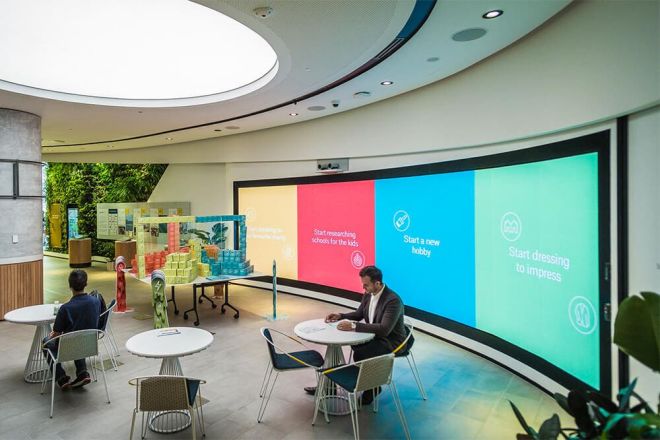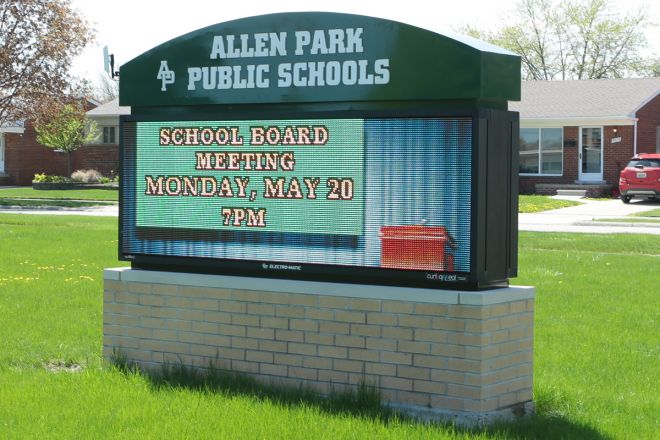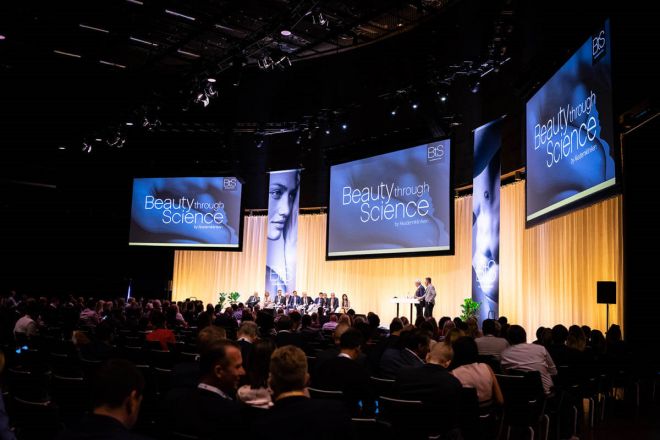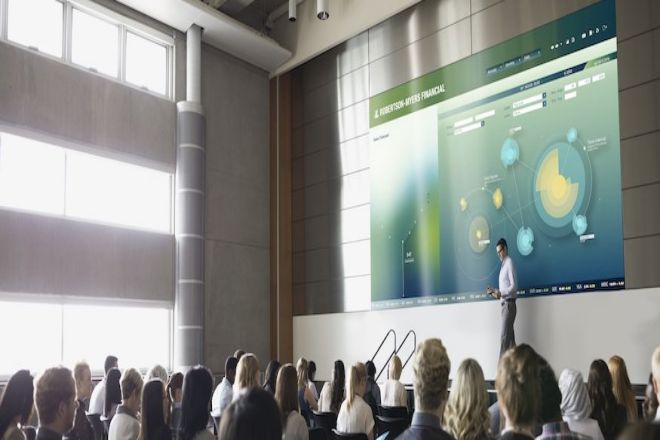Introducción

Con el rápido desarrollo de la ciencia y la tecnología, pantallas LED are gradually penetrating into every aspect of our lives with their excellent performance and wide range of application fields. Especially in the field of educación, schools are increasingly favoring LED displays.
So, why do schools prefer to use LED displays so much? This is not only because of its technological advancement but also because it can meet the school’s needs in teaching, publicity, activities, etc., providing strong support for the development of the school.
1. What are the benefits of using LED displays in educational settings?
With the continuous development of educational technology, LED displays are increasingly used in educational environments. It not only provides a more intuitive and vivid display method for teaching but also creates a more colorful learning experience for students. Below, we’ll explore the many benefits of using LED displays in educational settings.
- Enrich teaching methods and improve teaching quality.
The LED display screen can present various forms of teaching content, such as text, pictures, and videos, making teaching more vivid. Teachers can use LED displays to display courseware, experimental demonstrations, and other content to help students better understand knowledge points.
At the same time, the LED display screen can also realize remote teaching and online interaction, providing teachers and students with a more convenient way of communicating and enhancing the teaching effect.
- Provide diversified learning resources to meet individual needs.
The LED display screen can play various learning resources, including video tutorials, online courses, etc., providing students with diverse learning pathways.
Students can choose learning content and methods that suit them based on their interests and needs to achieve personalized learning. Such diverse learning resources can not only stimulate students’ interest in learning but also broaden their knowledge horizons and improve their overall quality.
- Promote the construction of campus culture and create a good learning atmosphere.
The LED display screen is an important platform to display campus culture. Schools can use LED displays to display the school’s educational philosophy, honorary achievements, student works, and other content to create a positive cultural atmosphere for the campus.
At the same time, the LED display can also be used to broadcast school news, event previews, and other information, enhance teachers’ and students’ sense of belonging and pride in the school, and promote the spread and development of campus culture.
- Improve school image and enhance social recognition.
As an important window to display the school’s image, the LED display screen can display the school’s educational strength, teaching achievements, and characteristic culture. Through exquisite design and high-quality screen display, LED display screens can enhance the overall image of the school and enhance society’s recognition and trust in the school.
This helps to enhance the school’s visibility and influence and creates favorable conditions for the school’s enrollment and development.
- Energy saving and environmental protection, in line with the concept of green education
LED displays have lower power consumption and longer service life than traditional display devices and are in line with the concept of green education. Using LED displays in educational environments can not only save energy bills but also reduce the impact on the environment and contribute to the sustainable development of schools.
2. Can LED displays be used to display students' homework and achievements?

LED displays can certainly be used to display students’ homework and achievements. The high definition, bright colors, and dynamic display characteristics of the LED display screen make it a very effective display platform, especially suitable for displaying students’ works and achievements.
En primer lugar, the LED display screen can visually display students’ homework. Whether it is a painting, handicraft, or written work, it can be converted into a digital image by taking a photo or scanning it and then displayed on the LED display.
This method is not only convenient and fast but also allows more students and teachers to see it, thereby increasing students’ exposure and self-confidence.
En segundo lugar, the LED display can display students’ achievements and honors. The school can regularly update the display content and display information such as students’ awards, academic achievements, and participation in activities through LED displays.
This not only recognizes and encourages students’ efforts but also inspires other students’ enthusiasm and enthusiasm for learning.
Además, the real-time update function of the LED display makes the display content more flexible and diverse. Schools can change the display content according to different festivals, activities, or themes to create a strong cultural and festive atmosphere.
For example, during the school’s art festival or science and technology festival, students’ artistic works or scientific and technological works can be displayed through LED displays to enhance the attraction and influence of the event.
3. Are there educational apps and software that are compatible with LED display technology?
Educational applications and software compatible with LED display technology are indeed diverse. They not only meet the basic needs for content display in educational environments but also provide rich interactive learning and teaching resource management functions.
Primero, content production and editing software play an important role in educational settings. These software usually have powerful graphics, video, and text editing functions, allowing teachers to easily create and edit teaching content suitable for LED display.
By using this software, teachers can design vivid and interesting courseware, including dynamic images, interactive buttons, and special effects, thereby attracting students’ attention and improving teaching effectiveness.
En segundo lugar, interactive learning software provides students with a richer learning experience. These software take advantage of the interactivity of LED displays to allow students to actively participate in interactive activities in class, such as online question answering, group discussions, and real-time feedback.
Through interactive learning software, students can gain a deeper understanding of knowledge and increase their interest and participation in learning. At the same time, teachers can also use this software to collect students’ learning data to better evaluate students’ learning progress and effects.
Además, resource-sharing software helps optimize the allocation and sharing of educational resources. This software can integrate various teaching resources within the school, such as e-books, teaching videos, and course materials, and display and share them through LED displays.
Students can access these resources at any time according to their own needs for independent learning and expanded learning. At the same time, teachers can also collaborate and communicate with other teachers through this software to jointly improve the quality of teaching.
Además, there are some LED display control software specially designed for schools, which have the characteristics of simple operation and complete functions. This software usually supports the import of files in multiple formats, such as PPT, pictures, and videos, and can easily play and switch content.
At the same time, they also have functions such as scheduled power on and off, brightness adjustment, and remote control, making it convenient for schools to manage and maintain LED displays.
4. What factors should schools consider when choosing LED displays?

When schools choose LED displays, they need to consider multiple factors to ensure that the selected display screen not only meets the needs of the school but also has a reasonable price/performance ratio. Here are some key considerations:
Screen size and resolution: Choose an appropriate display screen based on the school’s usage scenarios, such as auditoriums, classrooms, corridors, etc. At the same time, the high-resolution display can provide clearer and more detailed images, which helps improve the viewing experience.
Efecto de visualización: Consider parameters such as display brightness, contrast, and color saturation. The high-brightness and high-contrast display can maintain a clear display in a bright environment, while the rich colors can present teaching content more vividly.
Durability and stability: Schools need to choose durable and stable LED displays that can withstand the wear and tear of daily use and the impact of the external environment. In addition, the display should have a low failure rate and a long service life.
Ease of operation: Consider whether the control system of the display screen is easy to operate and whether it supports the import and playback of files in multiple formats. The convenient operating system can save teachers time and energy and improve teaching efficiency.
Energy consumption and environmental protection: Choosing low-energy consumption and environmentally friendly LED displays can help the school reduce operating costs and comply with the construction concept of a green campus.
Price and cost performance: While considering the above factors, schools also need to pay attention to the price of the display. Choose products that are highly cost-effective and can meet the needs of the school without putting excessive financial pressure on the school.
Brand and after-sales service: Choosing well-known brands and suppliers with good after-sales service can ensure product quality and service reliability. When problems are encountered, suppliers can provide timely technical support and solutions.
5. What are the security and privacy considerations for using LED displays in schools?

Security and privacy are two crucial considerations when using LED displays in schools. Below is a detailed exploration of both aspects:
1). Safety factors:
Equipment stability and reliability: LED displays should have a high degree of stability and reliability to prevent accidents caused by equipment failure. Schools should choose displays that have undergone strict quality testing to ensure that they can operate stably for a long time.
Electrical safety: The power cord and plug of the display screen should comply with safety standards to avoid fire or electric shock accidents caused by electrical problems. Schools should regularly check the condition of power cords and plugs to ensure they are intact.
Protective performance: Displays installed outdoors should have protective properties such as waterproof, dustproof, and lightning protection to cope with harsh weather conditions. In addition, the frame and bracket of the display screen should be strong to prevent damage or falling due to external impact.
Operational safety: Schools should develop clear operating regulations to ensure that teachers and students follow correct operating procedures when using displays. Avoid equipment failure or safety accidents caused by misoperation.
2). Privacy factors:
Information content control: Schools should strictly control the information content displayed on LED displays to ensure that students’ personal information or sensitive data is not leaked. At the same time, avoid showing photos or videos that involve student privacy on display.
Access controls: Schools should implement strict access controls for computers or servers that can control display content. Only authorized personnel may access and modify the contents of the display. This helps prevent unauthorized third parties from obtaining or tampering with the information on the display.
Data encryption and transmission security: If the display screen needs to receive or transmit data through the network, the school should use data encryption technology to ensure the security of the data during transmission. In addition, schools should regularly check the security of their networks to prevent hacker attacks or data leaks.
Conclusión
To sum up, schools’ preference for using LED displays is an inevitable result of the integration of technology and education.
In the future, with the continuous development of science and technology, LED displays will play a more important role in school education, making greater contributions to cultivating more outstanding talents and promoting the development of school education.
If you want to know more details about LED display, Por favor póngase en contacto con nosotros.
